Initial Design
For my bagatelle game, I wanted to capture the spirit of old coin-based attractions like Zoltar and electro-mechanical pinball machines, both in style and substance.
Instead of trying to get a high score, you ask the bagatelle wizard a yes or no question, then you get it answered depending on where the ball lands.
Since it was technically simple (and similar to a plinko machine), I wanted to make sure it was visually engaging.
All of the artwork was made by me, and I tried to emulate the electro-mechanical style- bright colors, no shading, ink linework, etc.
My design sketch featured three stars and four “slots” for the marble to land in. At the bottom, near the slots, there would be 3D “bump arches” that would tell the player their fortune.
Design Iteration
I started by sketching out what I wanted the playfield to look like and figure out how I was going to incorporate the fortune-telling aspect into the aesthetic.
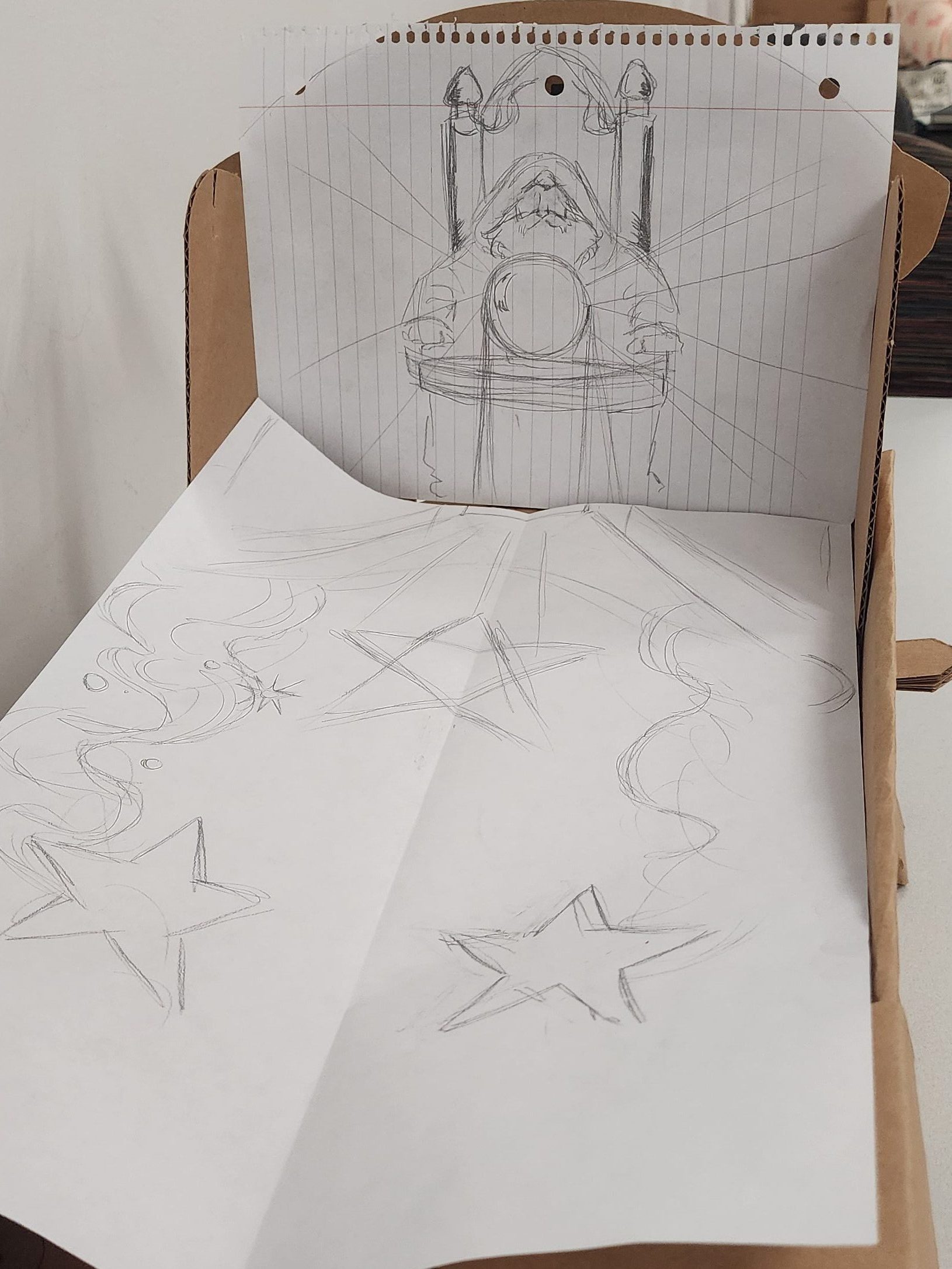
I knew that I wanted to include a wizard pondering a fortune-telling orb as part of the “backglass”. I sketched it first, then drew it on nicer paper and inked the design. I took a picture of the ink drawing and tested out different color palettes online before settling on a palette I liked.
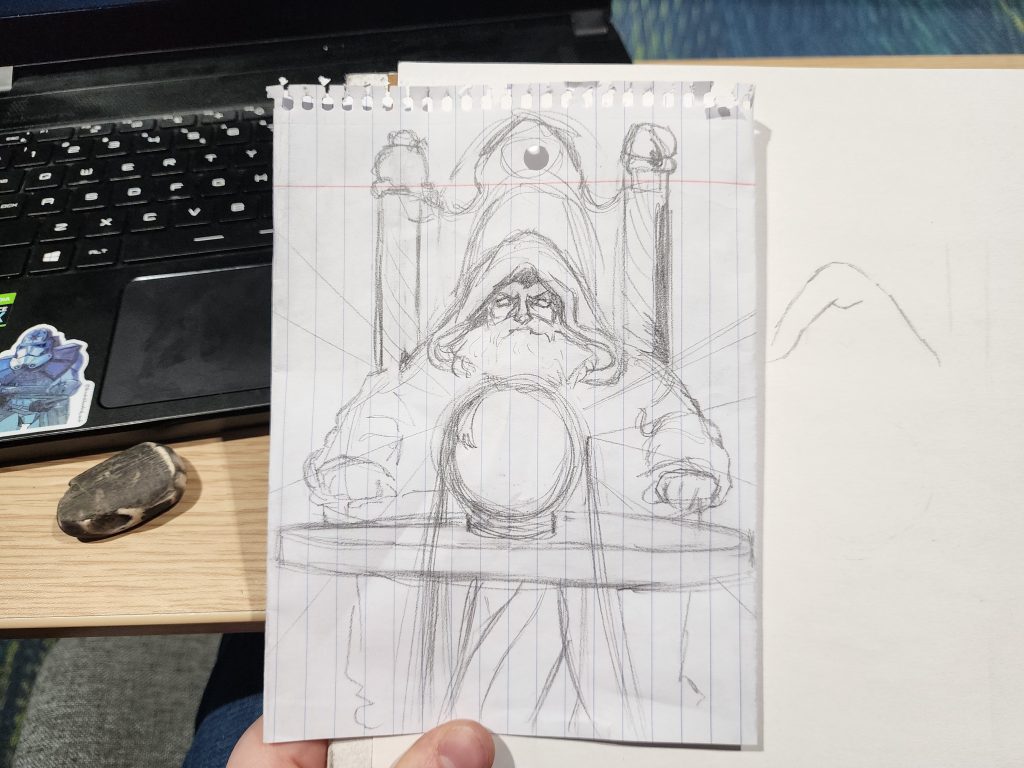

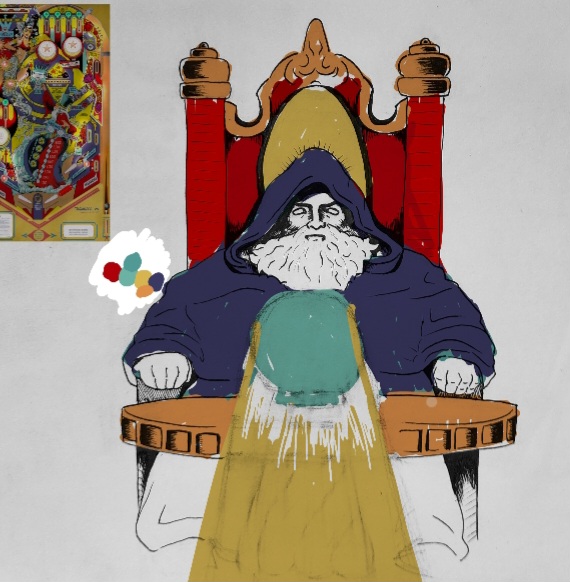

Next, I had to draw the playfield. Since I was only using straight pins to provide something for the ball to bounce off of, I could make a detailed background.
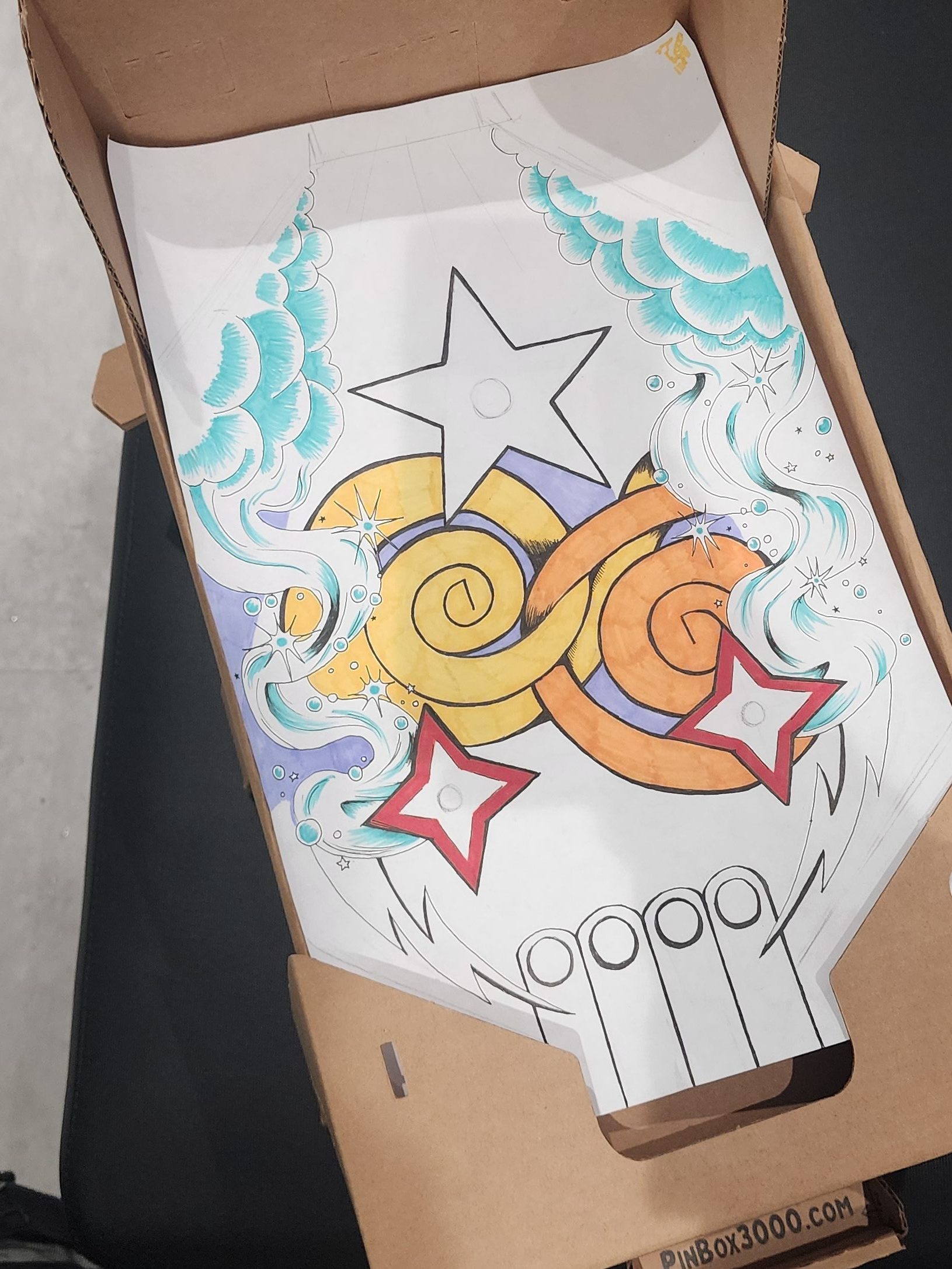
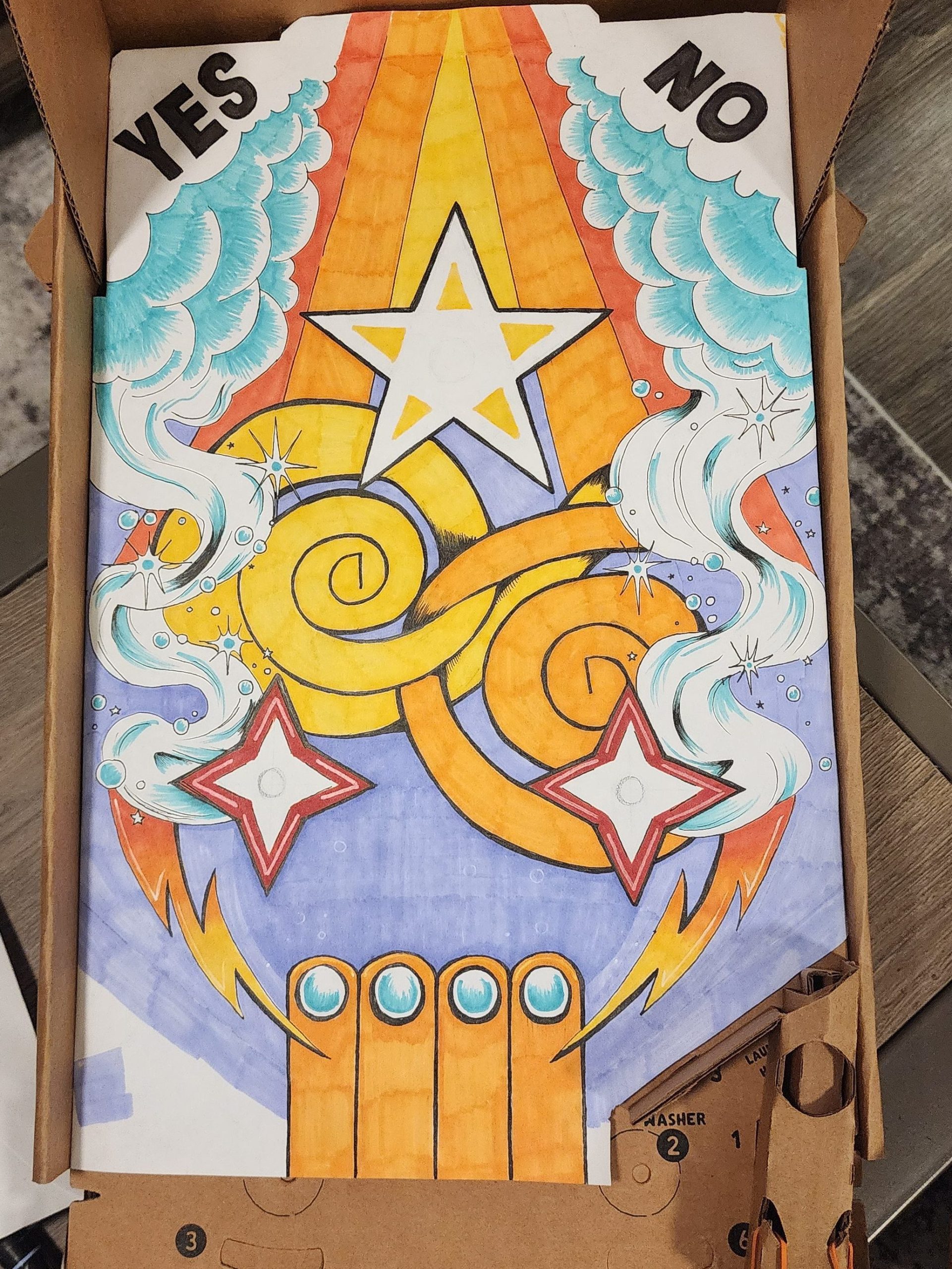

I incorporated three stars, but two stars are 4-point and one star is 5-point. I added lightning, clouds, and other smoke effects to depict the wizard’s powers.
This should cover your initial design ideas, what changed as you brought it together and iterated on it and why and what the user reactions were during your play tests.
Playtesting and Changes
I got a lot of helpful feedback from the initial playtest that helped me make the machine much better.
During the first playtest, playtesters wrote that the game looked great, but lacked randomness since the ball would often just roll down the left-hand side of the bagatelle into the far left gutter. I ended up adding more pins along the backside to add a curve so the ball wouldn’t roll down the left-hand side every time.
After I made these changes, the playtesters said that it felt more random and was more fun to play as they got more variety in their outcomes. (Someone also commented that the wizard told them they were “going to die alone :(“, but I don’t make the fortunes- he does.)
Finished Design
My finished design incoroporated more pins with strategeic placement to help ensure randomness.
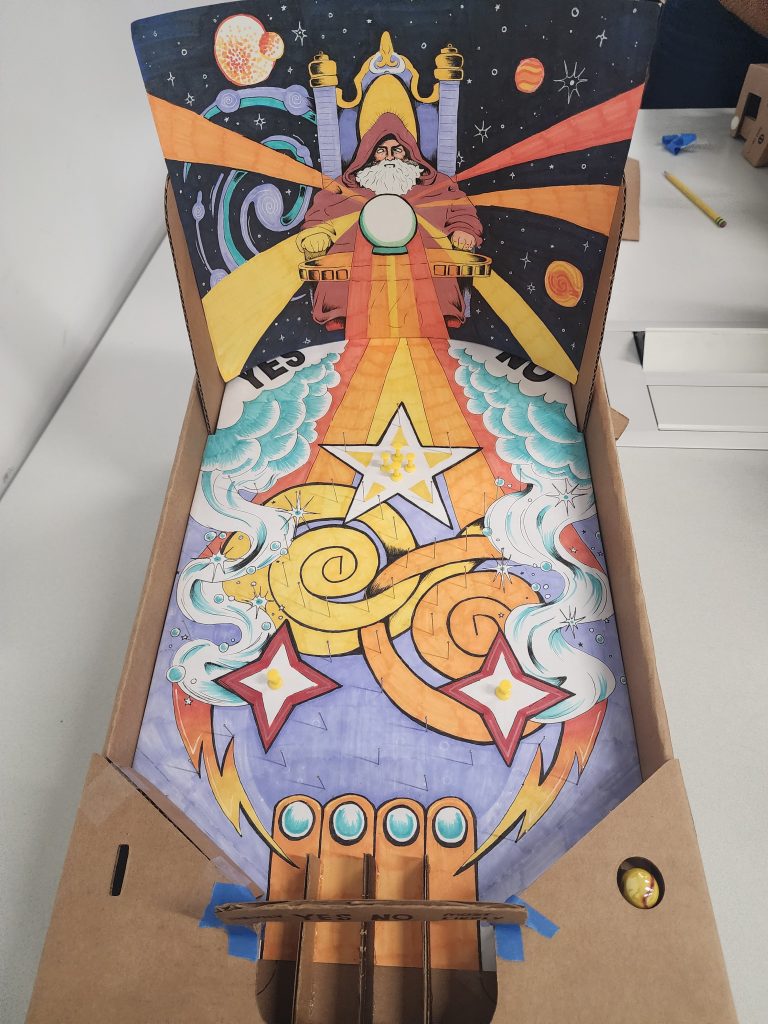
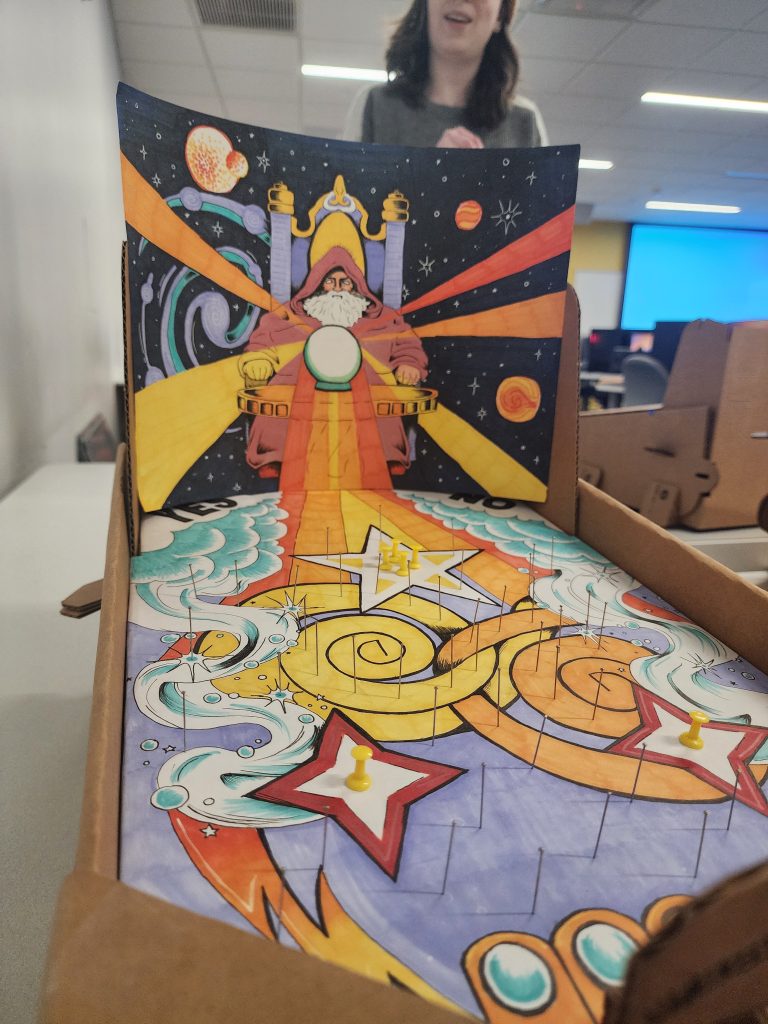
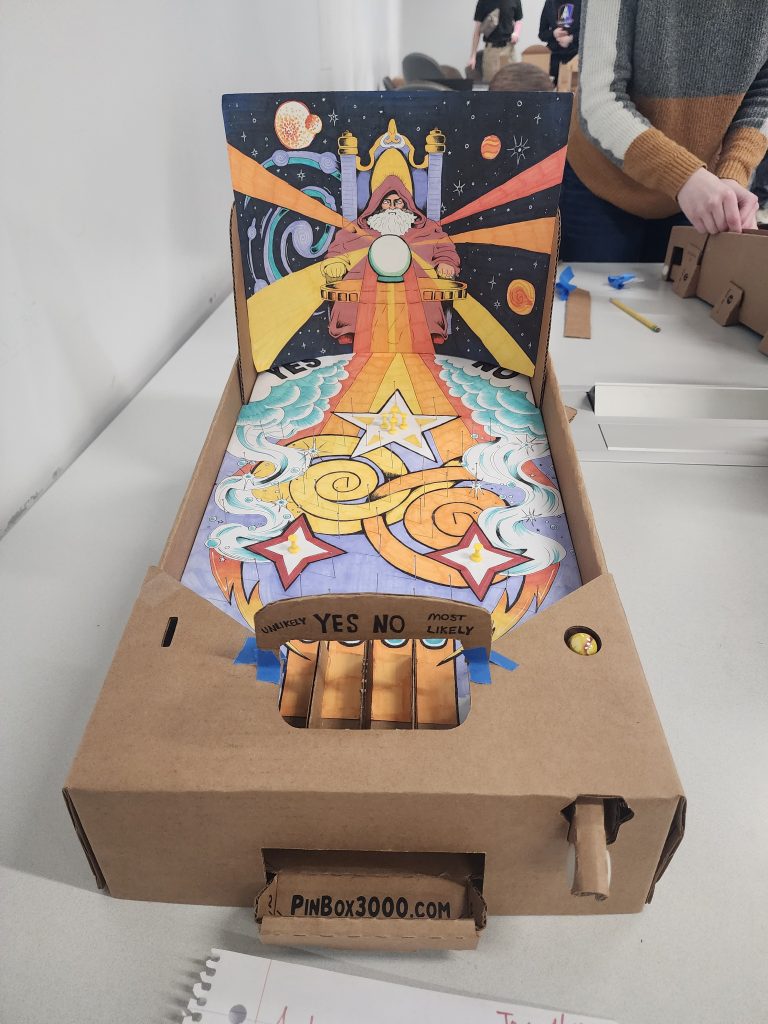

I had a fabulous time making this game, and I feel really good about the final product. The pins even produce a small melody of “dings” at different pitches as the pinball bounces off of them, since they’re pressed into the cardboard at different heights.
